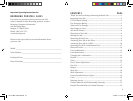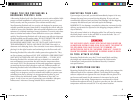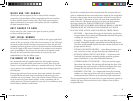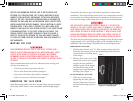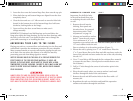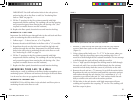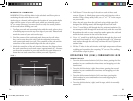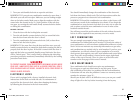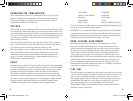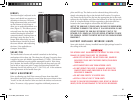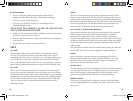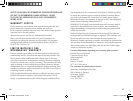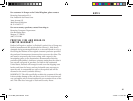4
5
Special fire considerations: Browning ProSteel fire-resistant safes are
rated to withstand the time and temperature stated on the rating label.
However, when a home burns some portions of that fire may burn at
more than 2000° F. Placement of your safe away from potential hot
spots of the fire will improve the chances of your safe and contents
surviving a home fire. WHILE THERE IS NO GUARANTEE
TEMPERATURES ANYWHERE WILL REMAIN BELOW A SPECIFIC
TEMPERATURE, WE STRONGLY RECOMMEND YOU AVOID
PLACING YOUR SAFE IN, ABOVE OR BELOW THESE AREAS:
• KITCHEN — Most home fires begin in the kitchen area because
of open flames from cooking and flammable materials like grease,
cooking oils, wood cabinets, etc.
• GARAGE — Keep your safe as far away from the garage as
possible. Flammable liquids, automobiles and small engines can
start fires and flammable liquids and other chemicals stored in the
garage can fuel the fire.
• FURNACE OR WATER HEATER — Open flames in these areas
may cause fires to start, and gas lines provide additional fuel.
• STORAGE AREAS FOR FUEL SOURCES — Avoid areas with
firewood, black powder, smokeless powder, gasoline, propane,
paint and thinners or any other flammable material.
• UPPER FLOORS OF THE HOME — Heat rises and the upper
floors burn the hottest. The safe may fall through the floor if the
fire damages the joist structure. A fall from the upper floor may
damage the safe and break the fire seal around the door.
• BASEMENT CENTER — In a catastrophic home fire, burning
timbers, etc. from upper floors will cave in toward the center of
the basement floor and burn at an extremely high temperature.
The best positioning for fire protection is in your basement, against an
outside wall, away from areas where a fire is likely to start or burn
exceptionally hot.
WATER AND FIRE DAMAGE
Should your safe be exposed to fire or water, the fire-resistant
properties of the insulation will be compromised. Do not continue
to store valuable items in such a safe. Check with your insurance
agent to determine if your policy will replace the safe, in addition
to other household items.
RUST DANGER TO GUNS
If your safe is in a fire, remove your guns as soon as possible
to clean and lubricate them.
SAFE SERIAL NUMBER
Your safe’s serial number is located on a label in the upper right-hand
corner of the rear exterior of the safe. Do not remove it. You will need
the serial number should warranty concerns arise. Since the safe will
probably be placed against a wall, you should record the serial number
on the first page of this owner’s manual, or in another secure location,
prior to installation. Do not lock the recorded serial number inside
the safe. You will need this serial number in case you lose your
combination or if the safe fails to open.
PLACEMENT OF YOUR SAFE
For maximum protection against theft, fire and weather exposure,
placement of your safe within your home is crucial. Place your safe
where it is not visible from windows or normal traffic areas. The best
way to protect your valuables is to keep them from being targeted in
the first place.
Placing your safe away from exterior doors and windows also makes
it more difficult and more time consuming for thieves to get your
valuables out of your home. Time is the crucial element. Thieves want
to get in and out of your home quickly. A time-consuming job is a
strong deterrent. The best location for your safe is in a basement, away
from windows, behind a locked door.
07-137-BSF_Safe OM.indd 4-5 7/21/08 11:13:08 AM




